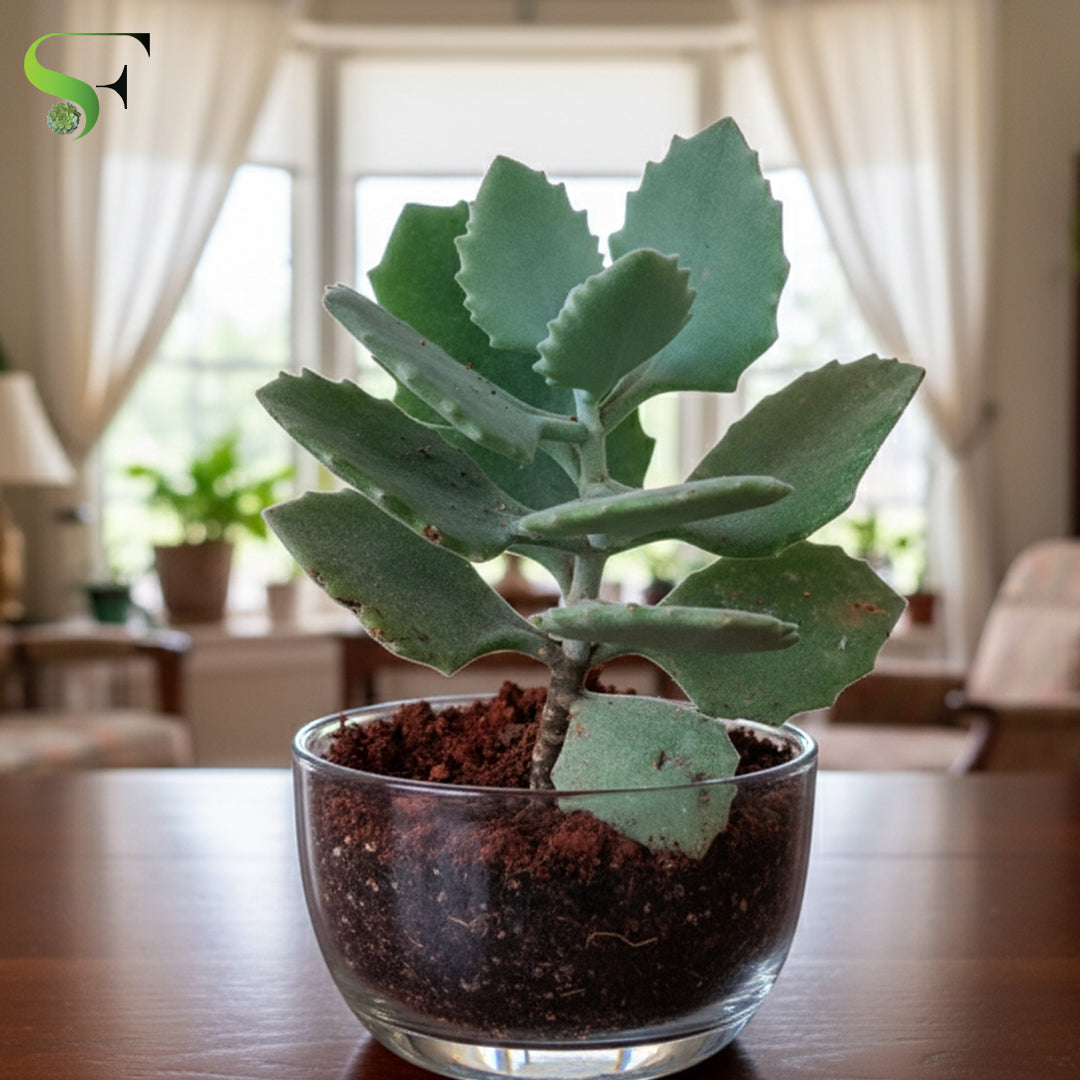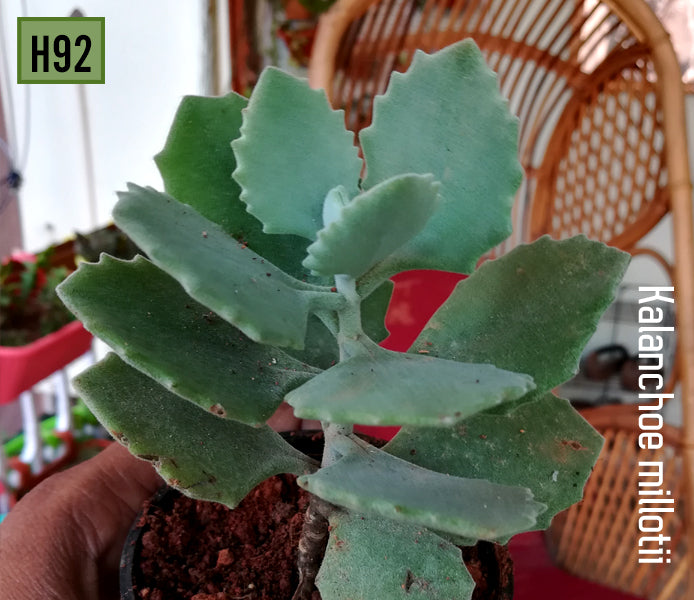Kalanchoe Kalamill Millotii
Kalanchoe Kalamill Millotii
Couldn't load pickup availability
ALL THE PLANTS WILL BE SENT BAREROOTED. NO POTS. NO SOIL
Kalanchoe millotii, commonly known as Millot Kalanchoe or Velvet Leaf Kalanchoe, is a charming and unique succulent native to Madagascar. This plant stands out for its soft, velvety foliage and is a fantastic addition to any succulent collection, whether grown as a houseplant or as part of an outdoor garden in warm climates.
Detailed Description
Kalanchoe millotii is a succulent subshrub that grows up to a foot high, forming a small, clumping bush. Its most distinctive feature is its leaves, which are oblong with a scalloped edge and are covered in a dense layer of fine, white, waxy hairs. This "felted" or "hairy" texture gives the plant a dusty, silvery-green appearance and is a natural adaptation to reduce water loss in its native arid environment.
The plant produces small, white to yellow-green flowers in loose clusters, typically blooming in late spring or early summer. These delicate flowers appear on upright stalks that rise above the foliage, providing a lovely contrast to the fuzzy leaves.
Growing Tips
Kalanchoe millotii is a resilient and low-maintenance plant, making it a great choice for both beginners and experienced succulent lovers.
-
Sunlight: This succulent thrives in bright, indirect light to full sun. A location with at least 6 hours of bright light per day is ideal. When grown indoors, a south- or west-facing window is a good spot. If outdoors, morning sun with protection from intense afternoon sun is best to prevent leaf scorching.
-
Fertilizing: Feed the plant during its active growing season (typically spring and summer) with a balanced, diluted liquid fertilizer formulated for succulents or cacti. Fertilizing once a month is sufficient. Reduce or stop feeding during the cooler, less active months.
-
Pruning: Pruning is not strictly necessary but can be done to maintain a desired shape or to encourage a bushier, more compact growth. You can easily remove any leggy stems.
Temperature and Hardiness
As a tropical succulent, Kalanchoe millotii prefers warm conditions and is not frost-tolerant.
-
Temperature: It thrives in average room temperatures between 65°F to 80°F (18°C to 27°C).
-
Hardiness Zones: This plant is hardy in USDA zones 10 to 12. In colder climates, it is best grown as a houseplant and can be moved outdoors during the warm summer months once nighttime temperatures consistently stay above 55°F (13°C).
Water Requirements
The key to successfully growing Kalanchoe millotii is to avoid overwatering. Its thick, fleshy leaves are excellent at storing water.
-
Watering Frequency: Use the "soak and dry" method. Water the plant thoroughly and deeply, but only after the soil has completely dried out. In the summer, this might be once a week or every couple of weeks, while in the winter, watering should be significantly reduced.
-
Drainage: Proper drainage is absolutely crucial to prevent root rot.
Soil Preparation
A well-draining soil mix is non-negotiable for this succulent.
-
Ideal Mix: A commercial succulent and cactus potting mix is a perfect choice.
-
DIY Mix: You can create your own by mixing regular potting soil with gritty amendments like perlite, coarse sand, or pumice to improve aeration and drainage. A mix with at least 50% inorganic material is a good starting point.
-
Potting: Choose a pot with at least one drainage hole. Terracotta pots are often recommended because they are porous and help to wick away excess moisture from the soil.
Propagation
Propagating Kalanchoe millotii is simple and rewarding, with a high success rate.
-
Stem Cuttings: This is the easiest and most common method.
-
Take a healthy stem cutting that is a few inches long, using a clean, sharp knife.
-
Allow the cutting to "callous over" or dry out for a few days. This forms a protective layer that prevents rot.
-
Once the end is dry, plant the cutting in a pot with a well-draining succulent soil mix.
-
Water very sparingly until roots have formed, which usually takes a few weeks.
-
-
Leaf Cuttings: You can also propagate from a single healthy leaf. The process is similar to a stem cutting: remove a healthy leaf, let it callous, and then place it on top of or slightly inserted into the soil.
#Kalanchoe #KalanchoeMillotii #Succulent #SucculentCare #Houseplant #DroughtTolerant #FuzzyPlant #VelvetLeafKalanchoe #GardeningTips #PlantPropagation
Share




